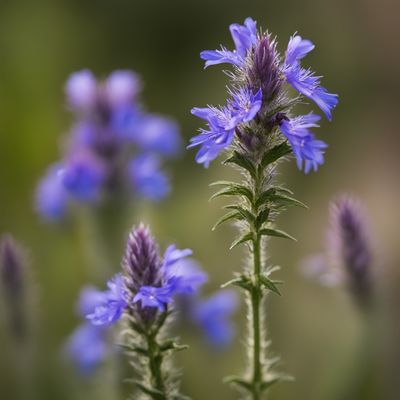
Ingredient
Borage seeds
The Starry Herb: Borage Seeds
Borage seeds are small, dark brown seeds that come from the borage plant, also known as starflower. They have a mild, nutty flavor with hints of cucumber and are often used as a garnish or ingredient in salads, soups, and beverages. The seeds have a crunchy texture and add a delightful visual appeal to dishes with their unique star shape. Borage seeds are highly versatile and can be used in both sweet and savory recipes.
Origins and history
Borage seeds have a rich history dating back to ancient times. They were highly valued by the Romans and Greeks for their medicinal properties and were believed to bring courage and comfort. Borage seeds were also used in traditional herbal medicine to alleviate various ailments, including respiratory issues and inflammation. Today, they are cultivated in many regions around the world for their culinary and health benefits.
Nutritional information
Borage seeds are a good source of omega-6 fatty acids, antioxidants, and minerals such as calcium and potassium. They are also known for their high gamma-linolenic acid (GLA) content, which is a beneficial fatty acid that supports overall health. Incorporating borage seeds into your diet can provide a nutritional boost and contribute to a well-rounded eating plan.
Allergens
May cause allergic reactions in individuals with sensitivities to plants in the Boraginaceae family.
How to select
When selecting borage seeds, look for seeds that are dark brown in color and have a firm texture. Avoid seeds that appear discolored or have a rancid smell, as these may indicate spoilage. It is recommended to purchase borage seeds from reputable sources to ensure their quality and freshness.
Storage recommendations
To maintain the freshness and quality of borage seeds, store them in a cool, dry place away from direct sunlight. Keep them in an airtight container to protect them from moisture and pests. Properly stored borage seeds can retain their flavor and nutritional value for up to a year.
How to produce
Borage plants are relatively easy to grow, making it possible for amateurs to produce their own borage seeds. Start by planting borage seeds in well-drained soil and providing them with ample sunlight. The plants are known for their resilience and can tolerate various growing conditions. Harvest the seeds when they turn brown and dry, and store them in an airtight container for future use.
Preparation tips
Borage seeds can be used in a variety of ways in the kitchen. They can be sprinkled over salads, soups, or roasted vegetables to add a crunchy texture and a subtle nutty flavor. Borage seeds can also be infused into oils or used to garnish desserts and beverages. Their unique star shape makes them visually appealing and adds an element of elegance to any dish.
Culinary uses
Borage seeds are commonly used as a garnish in salads, soups, and cocktails. They are also used in herbal teas and infused oils for their subtle flavor and visual appeal. In Mediterranean cuisines, borage seeds are often added to traditional dishes like pasta, risotto, or pesto. Their versatility allows them to be incorporated into both sweet and savory recipes, providing a delightful touch to the overall presentation.
Availability
Commonly available in Mediterranean countries such as Italy, Spain, Greece, and France.

